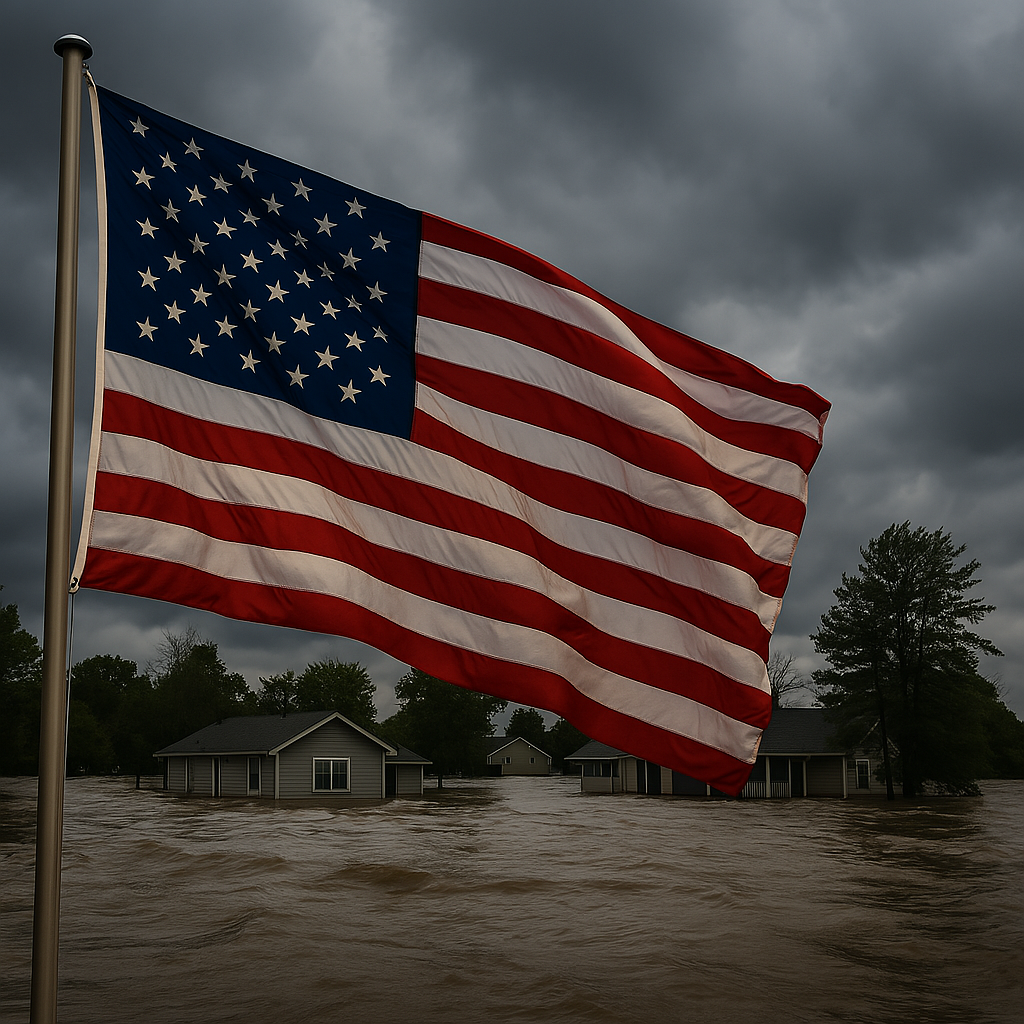
Four rare flood disasters struck the US in one week
Thank you for choosing Automatic Translation. Currently we are offering translations from English into French and German, with more translation languages to be added in the near future. Please be aware that these translations are generated by a third party AI software service. While we have found that the translations are mostly correct, they may not be perfect in every case. To ensure the information you read is correct, please refer to the original article in English. If you find an error in a translation which you would like to bring to our attention, it would help us greatly if you let us know. We can correct any text or section, once we are aware of it. Please do not hesitate to contact our webmaster to let us know of any translation errors.
 🌧️ United States: A Week of Historic Flooding
🌧️ United States: A Week of Historic Flooding
In less than seven days, the U.S. experienced four separate 1-in-1,000-year rainfall events, each statistically expected to occur only once every millennium. These deluges struck:
- Texas: Catastrophic flash flooding in the Hill Country killed at least 120 people. The Guadalupe River surged over 20 feet in just 90 minutes.
- North Carolina: Tropical Storm Chantal dumped nearly 12 inches of rain in 24 hours, triggering widespread flooding and ongoing flood watches.
- New Mexico: Flash floods swept through Ruidoso, killing three people. The area’s burn scars from past wildfires worsened runoff risks.
- Chicago, Illinois: Garfield Park saw 5 inches of rain in 90 minutes, prompting multiple rescues.
Experts warn that climate change is intensifying these events. Warmer air holds more moisture, increasing the likelihood of sudden, massive rainfall.
Photo Credit: From an idea by Bjorn Ulfsson, executed by Microsoft CoPilot.
🌡️ Why It Happened: Climate, Terrain, and Timing
Several factors converged to create a “worst-case scenario”:
- Extreme Atmospheric Moisture: Remnants of Tropical Storm Barry and Pacific moisture created a supercharged water cycle.
- Slow-Moving Storms: Weak jet streams allowed thunderstorms to stall, dumping rain over the same areas for hours.
- Flash Flood Alley: Texas Hill Country’s steep terrain and clay-rich soil funneled water rapidly into rivers.
- Burn Scars and Drought: Wildfire-damaged landscapes and compacted soil from drought worsened runoff in New Mexico and Texas6.
-
Climate Change: Warmer air holds more moisture. Hourly rainfall rates have increased in 90% of U.S. cities since 1970.
🚨 Systemic Failures and Emergency Response Gaps
Despite early forecasts, many communities were caught off guard:
- Delayed Alerts: Flash flood warnings were issued at 1:14 a.m., but many were asleep. Kerr County lacked a flood warning system due to budget constraints.
- Infrastructure Overload: Drainage systems in urban areas like Chicago and Durham couldn’t handle the volume.
-
Federal Staffing Cuts: The National Weather Service faced scrutiny over staffing reductions that may have impacted forecasting and coordination.
📉 Impact and Aftermath
- Death Toll: Over 120 confirmed fatalities, with 160+ still missing in Texas alone.
- Economic Damage: Estimated in the billions, with homes, roads, and businesses destroyed across multiple states.
- Environmental Fallout: Contaminated waterways, uprooted ecosystems, and long-term damage to aquifers and floodplains.
- Policy Reckoning: Renewed calls for investment in flood infrastructure, updated hazard maps, and climate-resilient planning2.
